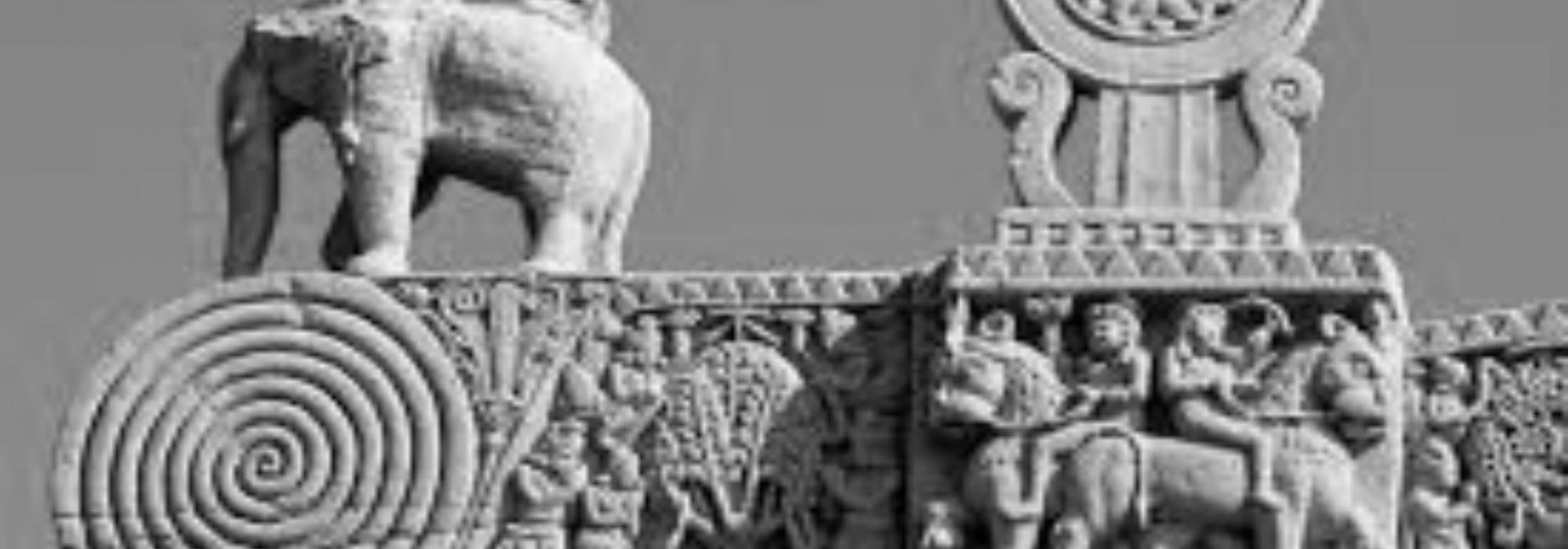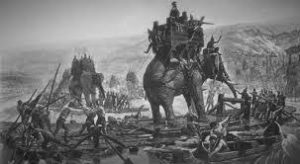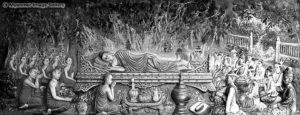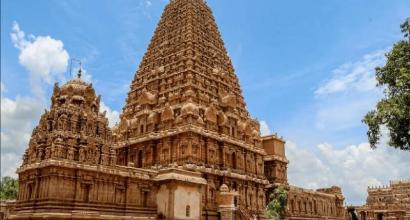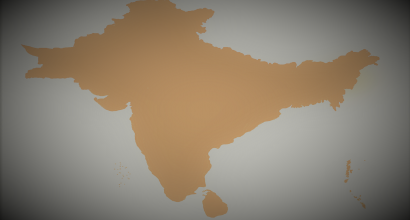All the historians of the world have unanimously hailed Aśoka. That Aśoka was an ideal king has been widely circulated. In ancient times, no other king, in no other part of the world undertook the establishment of so many dharma-śāsanas (rock edicts pertaining to law and dharma) like Aśoka. About two thousand three hundred years back, no other king had an empire of such expanse, to this extent, or this sort of reign. Nobody has recorded their acts with such extreme introspection or self-proclamation. But we see this with the view of अति सर्वत्रवर्जयेत् (too much of anything is to be avoided). Buddhist texts are filled with entertaining and fictitious accounts of how Aśoka ascended the throne and in what manner he established himself; these texts are our reference material. But they are not honest accounts. Apparently Aśoka had a hundred of his brothers killed. Buddhist historians opine that these assassinations were undertaken in accordance of the cunning schemes of the minister Rādhāgupta and were executed with the express wish of Aśoka. Even respected historians like Radha Kumud Mukherjee agree with this view.
Particularly in the Nehruvian Era, for base political ends, Aśoka began to be hailed as a great king sans flaws. It is only recently that clinical and objective re-examination of this topic has begun. Those interested may look at, for instance, the writings of Ashok Aklujkar and Sanjeev Sanyal on this topic.
It is well known that when Aśoka waged war against the Kalinga kingdom, upon seeing the destruction he had wrought upon them, he developed a hatred towards war and violence. Before that, he had expanded to a great deal the kingdom he inherited from his father and grandfather. But he had an ardent wish to conquer the Southeastern Kalinga kingdom. And so he waged a fearsome war. In that war, Aśoka had to imprison a hundred and fifty thousand people and kill the remaining hundred thousand of them. We learn from the records of that era that such was the large-scale bloodshed in that war. It is said that having inflicted such ghastly violence upon the Kalingas, he repented and turned to Buddhism. But we are not clear about this. The reason being that he has never claimed to have become a Buddhist; in his numerous dharma-śāsanas, we find absolutely no reference to this! He says that śramaṇas
and brāhmaṇas must be respected without exception. Words like śramaṇa, tīrthaka, tīrthaṅkara, arhanta, upāsaka, etc. might seem Jain or Buddhist terms at a cursory glance but all these words have their origins in the Vedas. Great scholars like Ananda Coomaraswamy, Baladev Upadhyaya, and Govind Chandra Pande have established that all these words are fundamentally a part of Sanātana Dharma. And so, the śramaṇas that Aśoka alludes to, might as well be Vedic ascetics! In some places, when renunciates are referred to as śramaṇas, we learn that even Jains were respected. Aśoka says that one must respect all classes of society. Remarkable is his ability to introspect. What should be the rules and regulations regarding food? How should subjects instill moral values in themselves? The manner in which he cogitates upon questions like these gives us a view into his personality. But one thing is true; after the Kalinga war, he never fought another. That said, he did not return the kingdom to the Kalingas, granting them freedom. What’s more, he does not apologize even! Thus Aśoka’s sense of detachment comes into serious question. Further, he did not tread the path of true kṣātra in that instance. A casual glance seems to suggest a sort of ‘Hamlet’s Hesitation’ in him. Arjuna, the famous Pāṇḍava, too had such detachment and disillusionment regarding war; but that came before the clash of weapons on the battlefield. However, he realized his true purpose, thanks to Krishna’s counsel. Aśoka did not find a guide like Krishna; nor did he live a life of truth like Buddha. In sum, he strayed from the path of kṣātra. That is one lacuna I find in Aśoka. After establishing a vast empire, a king has to constantly wield the scepter [i.e. he must protect the helpless and punish the evil]. If a king declares “I will wage no further wars!” then what will be the fate of that kingdom? In the Mahābhārata, after the Rājasūya yajña, Yudhiṣṭhira takes an oath: “From now on, I will not oppose anybody; I shall not refuse anything to anyone.” The great calamity that resulted from this foolishness was that when Duryodhana called, “Come and play dice!” he had to accept; when Duryodhana cried, “Wager yourself and your wife!” he had to comply; and when they said, “Bring her to the assembly,” which was wholly unfair, Yudhiṣṭhira had to say “Astu” (So be it). This was utterly thoughtless of him; absolute stupidity. Here we must observe the strategies and counter-strategies. Even if a snake doesn’t bite, it must hiss. Aśoka did not properly understand Buddha’s philosophy. And to know what Buddha’s vision was, we must take a look at his fundamental teachings.
The Awareness of Kshaatra in Buddha
There was a gap of about three hundred years between Buddha and Aśoka. Buddha lived in the 6th century BCE. He was born in 560 BCE. He saw the effulgence of kṣātra in his surroundings. He had seen the lacunae and failings of the system of republics. Even so, he felt that one should support the war that is fought out of love for one’s freedom. Today Buddha has become a symbol for the cowardly pseudo-secularism. Buddha was a person who sincerely upheld Vedic values. It is due to the Communists [Marxist historians] that he has wrongly been portrayed today as a rāja-virodhi (lit. ‘anti-king’), an anti-establishment figure, as someone who was against kings. In fact, Buddha camped at several spots that were near the palaces of renowned kings. And among his great devotees were kings of those
days. During the time Buddha left his palace and roamed about in the jungle, Śreṇyaka Bimbisāra met him and said, “You are such a brilliant person; so resplendent. If you don’t want the kingdom of your father Śuddhodana, come with me. I will give you a portion of the Magadha Empire. You can live happily there!” Buddha replies, “No, I have no such desires.” We know that even when he was Siddhartha, and before his enlightenment, he knew many kings well. After his enlightenment, he was intimately friendly with Bimbisāra, the Magadha emperor, and later with his son Ajātaśatru. Buddha was also compassionate towards Prasenajit (Pasenadi) of Śrāvasti, who had been a victim of many weaknesses. The insanity of Prasenajit is world-famous. We find these details in the foundational works of Buddhism. In his palace, there were several schemes and dealings, intrigues, and fights. In spite of this, Buddha always maintained a supportive stance towards Prasenajit. Buddha was also friendly towards Udayana Vatsarāja, a great connoisseur of the arts but a fickle-minded man. In Udayana’s capital, Kauśambi, Buddha conducted several cāturmāsyas (this was earlier called varṣāvāsa). He was also friendly with King Brahmadatta who ruled over Kāśi. He had strong connections with the various kṣātra-gaṇas, i.e. republics such as Malla, Madra, Śākya, Koliya, and Vajji. He had amicable relationships everywhere. Further, Buddha treated with great courtesy Sudatta and Anāthapiṇḍada, who were wealthy vaiśyas with a flourishing trade with far-off islands. He would reside in vihāras [monasteries] that were specifically built for him, by kings, princes, traders, and the wealthy; he would also accept bhikṣā (alms) from them. None of this is one bit inappropriate. There merely indicate the Buddha’s samadarśitva (looking at everyone with the same eye). We’re only protesting the manner in which the Communists have cleverly concealed these details! Buddha was amicable not just to commoners but also to kṣatriyas. That is the reason why the Suttapiṭaka records in detail his conversation with Siṃhasenāpati, the leader of the Licchavis and the commander-in-chief of the Vajji-gaṇa (the Vajji Republic). Those interested can take a look at the Sehasutta.
Vardhamāna Mahāvīra and Buddha were contemporaries. Several records indicate that Vardhamāna was 25-30 years older than Buddha. Both had undertaken cāturmāsyas at Vaiśāli, which was the center of the Licchavis. In fact, Vardhamāna Mahāvīra was born in the Licchavi Republic. Thus he is called ‘Nigrantha Jñātṛputra;’ here, jñātṛputra refers to a relationship of cousins. He was a relative of Licchavis. Mahāvīra called Buddha an ‘akriyāvādi,’ i.e. ‘one who was not for the revival of karma and kṣātra;’ ‘one who has not instructed anything.’ (Buddhists texts are the basis for this. Jaina texts say quite the opposite!) Upon hearing this, Siṃha (Seha) goes to Buddha and asks him, “Are you an akriyāvādi? That is what our Vardhamāna Mahāvīra claims.” In response Buddha says, “I am definitely not an akriyāvādi! I am a kriyāvādi. I have never ignored karmayoga, punishments by the king, individual freedom, or the fulfillment of responsibilities. I merely advocate the Middle Path. I only say that nothing should go to the extremes.” The primary characteristic of Sanātana Dharma is the adherence to the Middle Path.
Once when Buddha was in the same Vaiśāli, the Licchavis asked him, “There are repeated attacks on the Licchavis from the Magadha Empire, primarily at the command of Ajātaśatru. We fought against Śreṇyaka Bimbisāra himself but now he is dead. His son Ajātaśatru is constantly waging war against us. How do we protect our freedom, our sovereignty, and our eminence?” Then Buddha tells them the saptaśīla, the seven virtues.
To be continued...
Translated from Kannada by Hari Ravikumar. Translator's notes in square brackets.

